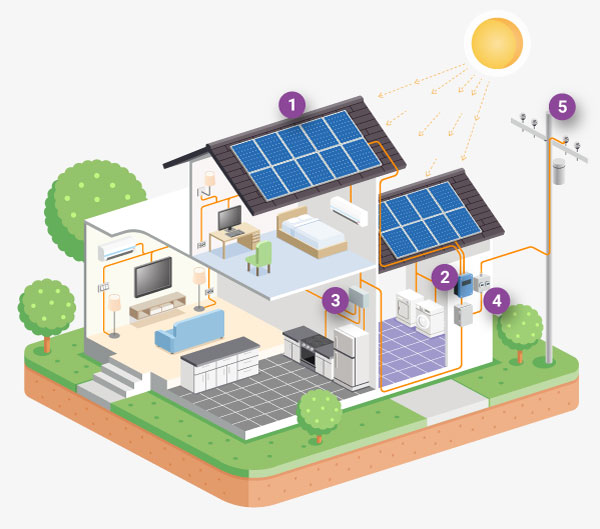Home » Guide to Decide » Get to Know Solar
Get to Know Solar
How does solar power work?
How do solar panels turn sunlight into electricity? Solar energy uses photovoltaic (PV) cells in solar panels to absorb the naturally-occurring energy in sunlight. That energy is then converted from direct current (DC) to alternating current (AC) by an inverter so your home can use the electricity.
If you decide to install solar at your home, PEC will set an electric meter that can record the electricity we deliver to you as well as the excess production that flows back onto the PEC distribution system. You are charged only for the electricity you use from our system, and credited for any electricity that flows back to the grid.
How it works

- Solar panels collect energy from sunlight as DC electricity.
- An inverter converts DC electricity into alternating current AC electricity compatible with your home’s electrical system.
- This AC electricity is connected to your home through the main electric panel.
- The special interconnected meter has registers for both power delivered and power received.
- Your home remains connected to the PEC distribution system. Any excess energy you produce flows back into the system, and you are credited for your contribution.
For more information on how solar power works, see this video from the U.S. Department of Energy.